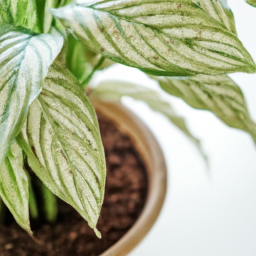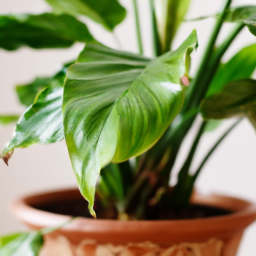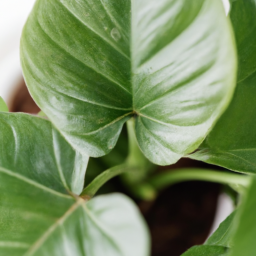
Are you looking to add some greenery to your home but worry about keeping plants alive? Look no further! In this blog post, we will discuss the easiest houseplants to keep alive. Whether you have a green thumb or not, these low-maintenance plants are perfect for beginners and busy individuals alike. Let’s dive in and discover some beautiful and resilient houseplants that will thrive in your home with minimal effort.
Easiest Houseplants for Beginners
Choosing the Right Houseplant
When it comes to choosing the right houseplant for beginners, there are a few key factors to consider. First and foremost, you’ll want to choose a plant that is known for being low-maintenance and easy to care for. Some popular options include pothos, spider plants, and snake plants. These plants are all known for their ability to thrive in a variety of conditions and require minimal attention.
In addition to choosing a low-maintenance plant, you’ll also want to consider the amount of light your space receives. Some houseplants require more sunlight than others, so it’s important to choose a plant that will thrive in the conditions of your home. If you have a space that receives a lot of natural light, you may want to consider a plant like aloe vera or a peace lily. On the other hand, if your space is on the darker side, a plant like a ZZ plant or a pothos may be a better option.
Finally, it’s important to consider the size of the plant and how much space you have available. Some houseplants can grow quite large, so it’s important to choose a plant that will fit comfortably in your space. If you’re limited on space, you may want to consider a smaller plant like a spider plant or a snake plant.
Caring for Your Houseplant
Once you’ve chosen the right houseplant for your space, it’s important to understand how to care for it properly. One of the most important factors to consider is watering. Overwatering is one of the most common mistakes that beginners make when caring for houseplants. It’s important to water your plant only when the soil is dry to the touch, as overwatering can lead to root rot.
In addition to watering, it’s important to consider the humidity levels in your home. Some houseplants, like ferns and orchids, require higher humidity levels to thrive. If you live in a dry climate, you may want to consider placing a humidifier near your plants or misting them regularly to help increase the humidity levels.
Finally, it’s important to regularly check your plants for pests and diseases. Common pests that can affect houseplants include spider mites, aphids, and mealybugs. If you notice any signs of pests or diseases, it’s important to take action quickly to prevent them from spreading to other plants.
Troubleshooting Common Issues
Even with the best intentions, it’s possible to encounter some common issues when caring for houseplants. One of the most common issues is yellowing leaves, which can be caused by a variety of factors including overwatering, underwatering, or nutrient deficiencies. If you notice yellowing leaves on your plant, it’s important to assess the situation and make any necessary adjustments to your care routine.
Another common issue is wilting leaves, which can be a sign of underwatering or root rot. If you notice wilting leaves on your plant, it’s important to check the soil moisture levels and adjust your watering schedule accordingly. In some cases, you may need to repot your plant to prevent root rot from spreading.
Overall, caring for houseplants can be a rewarding and enjoyable experience for beginners. By choosing the right plant for your space, understanding how to care for it properly, and troubleshooting common issues, you can create a thriving indoor garden that will bring beauty and joy to your home.

Low-Maintenance Houseplants for Busy Individuals
Choosing the Right Houseplant
When it comes to selecting houseplants for your home, it’s important to choose varieties that are not only beautiful but also easy to care for. For busy individuals who may not have a lot of time to dedicate to plant care, low-maintenance options are the way to go. Some popular choices include snake plants, pothos, and spider plants.
Snake plants, also known as mother-in-law’s tongue, are incredibly resilient and can thrive in a variety of conditions. They require very little water and can tolerate low light levels, making them perfect for those who may forget to water their plants regularly. Pothos, on the other hand, are known for their trailing vines and heart-shaped leaves. They are also very forgiving when it comes to watering, as they can withstand periods of drought.
Spider plants are another great option for busy individuals. These plants are known for their air-purifying qualities and are incredibly easy to care for. They thrive in indirect sunlight and only need to be watered occasionally. With their long, arching leaves and small white flowers, spider plants can add a touch of green to any room without requiring a lot of attention.
Caring for Your Low-Maintenance Houseplants
While low-maintenance houseplants are easy to care for, they still require some basic attention to thrive. One of the most important things to remember is to water your plants sparingly. Overwatering can lead to root rot, so it’s best to let the soil dry out between waterings. You can check the moisture level by sticking your finger into the soil – if it feels dry, it’s time to water.
In addition to proper watering, it’s also important to provide your plants with the right amount of sunlight. While low-maintenance houseplants can tolerate low light conditions, they still need some natural light to photosynthesize. Place your plants near a window where they can receive indirect sunlight for a few hours each day.
Finally, don’t forget to periodically clean your plants to remove dust and debris from their leaves. This can help them photosynthesize more efficiently and prevent pests from taking up residence. Simply wipe the leaves with a damp cloth or give them a gentle shower in the sink to keep them looking fresh and healthy.
Troubleshooting Common Issues
Even low-maintenance houseplants can run into problems from time to time. If you notice that your plant’s leaves are turning yellow or brown, it may be a sign of overwatering. Allow the soil to dry out completely before watering again, and make sure your plant is not sitting in standing water.
If your plant’s leaves are wilting or drooping, it may be a sign of underwatering. Give your plant a thorough watering and make sure the soil is evenly moist. You can also mist the leaves with water to help increase humidity around the plant.
Pests can also be a common issue with houseplants, but there are natural ways to combat them. Try wiping the leaves with a mixture of water and mild soap to remove pests like spider mites or mealybugs. You can also introduce beneficial insects like ladybugs to help keep pest populations in check.
By choosing low-maintenance houseplants and following these simple care tips, busy individuals can enjoy the beauty of nature in their homes without adding extra stress to their already hectic schedules. With a little bit of attention and care, these plants can thrive and bring a touch of greenery to any space.

Top Houseplants That Thrive with Minimal Care
Introduction
Houseplants are a great way to bring a touch of nature into your home, but not everyone has a green thumb. If you struggle to keep plants alive, fear not! There are plenty of houseplants that are incredibly easy to care for and require minimal attention. In this article, we will explore the top houseplants that thrive with minimal care, so you can enjoy the beauty of indoor plants without the stress of constant maintenance.
Snake Plant
The Snake Plant, also known as Sansevieria, is a popular choice for those looking for a low-maintenance houseplant. This plant is incredibly resilient and can survive in a variety of lighting conditions, making it perfect for beginners. Snake Plants have long, sword-shaped leaves that can grow upright or in a rosette pattern, adding a modern touch to any room.
One of the key benefits of the Snake Plant is its ability to purify the air by removing toxins such as formaldehyde and benzene. This makes it not only a visually appealing plant but also a functional one. To care for a Snake Plant, simply place it in indirect sunlight and water it sparingly, allowing the soil to dry out between waterings. With minimal effort, your Snake Plant will thrive and continue to purify the air in your home.
Another reason why the Snake Plant is a top choice for low-maintenance houseplants is its ability to withstand neglect. If you forget to water it for a few weeks, don’t worry – the Snake Plant can handle it. This plant is perfect for busy individuals or those who tend to forget about their plants, as it can survive with minimal care.
In conclusion, the Snake Plant is a top houseplant that thrives with minimal care. Its resilience, air-purifying qualities, and ability to withstand neglect make it a perfect choice for beginners or those looking for an easy-to-care-for plant.
Pothos
Pothos, also known as Devil’s Ivy, is another popular houseplant that is incredibly easy to care for. This plant features heart-shaped leaves that come in a variety of colors, including green, variegated, and golden hues. Pothos is a versatile plant that can be grown in a hanging basket, on a trellis, or as a trailing plant on a shelf.
One of the key benefits of Pothos is its ability to thrive in low light conditions, making it perfect for rooms with limited sunlight. This plant is also known for its air-purifying qualities, helping to remove toxins such as formaldehyde and benzene from the air. To care for a Pothos plant, simply place it in indirect sunlight and water it when the top inch of soil feels dry. Pothos is forgiving when it comes to watering, so you don’t have to worry about overwatering.
Another reason why Pothos is a top choice for low-maintenance houseplants is its fast growth rate. This plant is known for its ability to quickly fill out a space and create a lush, green display. With minimal care, your Pothos plant will thrive and add a touch of nature to any room in your home.
In conclusion, Pothos is a top houseplant that thrives with minimal care. Its ability to thrive in low light, air-purifying qualities, and fast growth rate make it a perfect choice for beginners or those looking for an easy-to-care-for plant.
Succulents
Succulents are a popular choice for those looking for low-maintenance houseplants that require minimal care. These plants come in a variety of shapes, sizes, and colors, making them a versatile option for any home. Succulents are known for their ability to store water in their leaves, allowing them to survive in dry conditions with minimal watering.
One of the key benefits of succulents is their ability to thrive in bright, indirect sunlight, making them perfect for sunny windowsills or well-lit rooms. Succulents are also incredibly resilient and can withstand periods of neglect, making them ideal for busy individuals or those who travel frequently. To care for succulents, simply place them in a sunny spot and water them sparingly, allowing the soil to dry out between waterings.
Another reason why succulents are a top choice for low-maintenance houseplants is their ability to propagate easily. Many succulent varieties can be propagated from cuttings or leaves, allowing you to expand your collection without having to purchase new plants. With minimal care, your succulents will thrive and add a touch of natural beauty to your home.
In conclusion, succulents are top houseplants that thrive with minimal care. Their ability to store water, thrive in bright sunlight, and propagate easily make them a perfect choice for beginners or those looking for an easy-to-care-for plant.
By choosing houseplants that require minimal care, you can enjoy the beauty of indoor plants without the stress of constant maintenance. Whether you opt for a Snake Plant, Pothos, or succulents, these top houseplants will thrive with minimal attention, allowing you to enjoy the benefits of nature in your home.
Here are the Essential Points
If you have a less-than-green thumb but still want to enjoy the benefits of having houseplants, fear not! There are plenty of easy-to-care-for options that will thrive in your home without requiring too much attention. One of the easiest houseplants to keep alive is the snake plant, also known as mother-in-law’s tongue. This hardy plant can survive in low light and only needs to be watered occasionally, making it perfect for busy individuals or forgetful plant owners.
Another great option for those looking for low-maintenance houseplants is the pothos plant. This vine-like plant can thrive in a variety of lighting conditions and only needs to be watered when the soil feels dry to the touch. Plus, pothos plants are known for their air-purifying qualities, making them a great addition to any home. So, if you want to add some greenery to your space without the stress of constant care, consider adding a snake plant or pothos plant to your collection.
Your Burning Questions Answered:
Q1. What are some of the easiest houseplants to keep alive?
A1. Some of the easiest houseplants to keep alive include snake plants, pothos, spider plants, peace lilies, and succulents. These plants are low-maintenance and require minimal care to thrive.
Q2. How often do I need to water easy-to-care-for houseplants?
A2. Easy-to-care-for houseplants generally only need to be watered once every 1-2 weeks, depending on the plant and the environment they are in. It’s important to let the soil dry out between waterings to prevent overwatering.
Q3. Do easy-to-care-for houseplants require a lot of sunlight?
A3. Most easy-to-care-for houseplants do well in indirect sunlight or low light conditions. They can thrive in various lighting situations, making them ideal for homes or offices with limited natural light.
Q4. How can I prevent my easy-to-care-for houseplants from dying?
A4. To prevent your easy-to-care-for houseplants from dying, make sure to follow the watering instructions specific to each plant, avoid overwatering, provide adequate drainage, and occasionally clean the leaves to remove dust and debris.
Q5. Can easy-to-care-for houseplants improve indoor air quality?
A5. Yes, easy-to-care-for houseplants can help improve indoor air quality by removing toxins and pollutants from the air. Plants like snake plants and peace lilies are known for their air-purifying properties, making them a great addition to any indoor space.

James Wong is a renowned ethnobotanist, plant scientist, and local television presenter. With a passion for demystifying plant science, he is known for translating complex botanical concepts into practical advice for everyday plant enthusiasts. James’s expertise spans from traditional gardening to cutting-edge plant technologies, making his insights accessible and informative.


